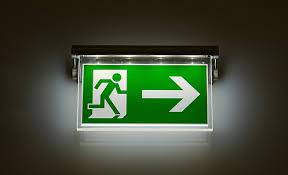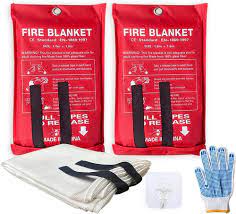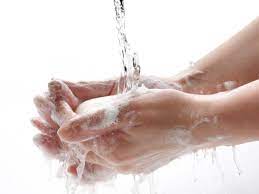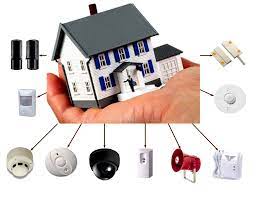Emergency lighting

Lighting intended for use during power failure of primary lighting devices.
According to the PN-EN 1838 standard, emergency lighting is a general term for several specific types of lighting:
– escape route lighting
– Open area lighting
– High risk zone lighting
Carbon Oxygen detektor
A carbon monoxide detector is designed to alarm at exposure levels (CO) greater than 100 ppm. The smoke detector only indicates the presence of smoke reaching the sensor, it is not intended to detect gas, heat or flame.

Fire blanket

Fire blanket – handy fire extinguishing equipment used to mechanically cut off the air supply to burning materials. It is made of fiberglass. In the past, fire blankets were made of hemp fibers interwoven with asbestos fibers. It has an area of approximately 3 m2. It is used by tightly covering a small, burning object or, for example, a barrel with a burning liquid. When using a blanket, remember to cover the fire from your side to avoid fire burns. Can be used to extinguish burning clothes. The disadvantage of a fire blanket is that it can only be used effectively to extinguish small fire sources and those located close to the person extinguishing the fire. The advantage is the possibility of repeated use and non-destruction of extinguished items.
The audio system
The audio system, known as EVAC, uses audio announcements for emergency purposes by transmitting messages through a loudspeaker. This type of system is a security facility designed to provide valuable information in the event of an evacuation.

Hygiene

Hygiene – a branch of medicine that studies the impact of the environment on human physical and mental health. The aim of this research is to provide individuals and society with the best possible conditions for physical and mental development. The practical results of hygiene are indications regarding the removal of negative influences from human life, which in various ways threaten health, and the introduction of positive factors.
Hygiene is divided into many fields dealing with specific environments of human life and activity: personal hygiene, school hygiene, digital hygiene, animal husbandry hygiene, municipal hygiene, social hygiene, work hygiene, driving hygiene, and food and nutrition hygiene.
Hygiene is one of the vital standards, generally it is people’s desire to maintain their health in the best possible condition for as long as possible and to extend their life as much as possible.
Health
Health – a state of complete physical, mental and social well-being (including subjective well-being), and not merely the complete absence of disease or disability. It is recognized as a social value, protected at the level of the human population (public health).

- physical health
– proper functioning of the body, its systems and organs;
- mental health:
* emotional health – the ability to recognize emotions, express them appropriately, the ability to cope with stress, tension, anxiety, depression, aggression,
* mental health – the ability to think logically and clearly;
- Social health
– the ability to establish, maintain and develop proper relationships with other people;
- Spiritual health
– in some people related to religious beliefs and practices, in others a personal set of principles, behaviors and ways to achieve inner peace and balance.

